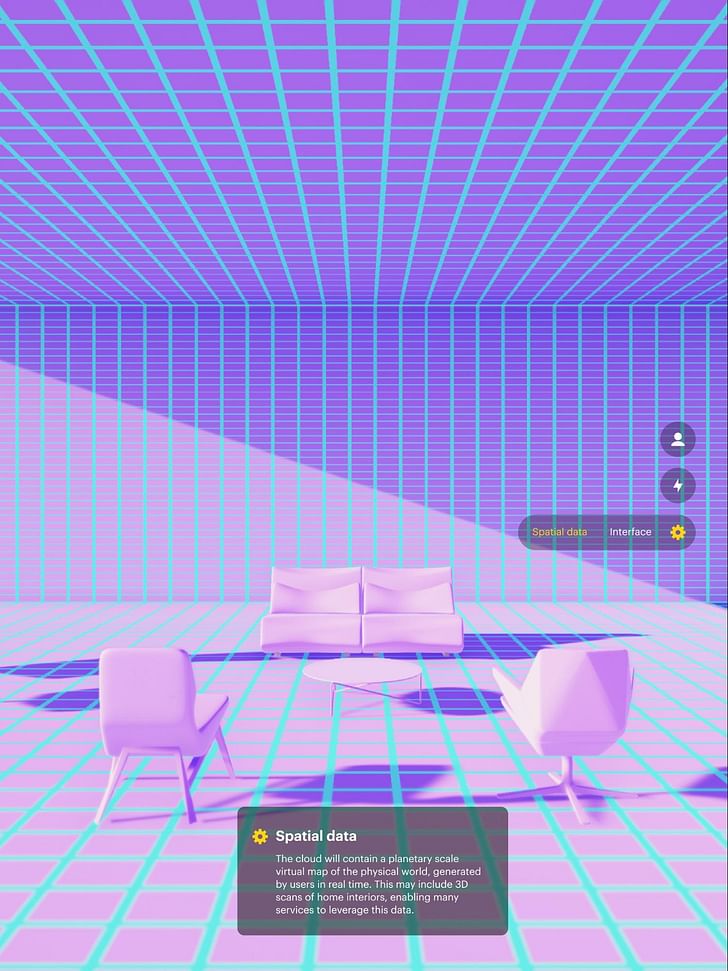

In our third installment of our 4-part series Designers in Tech, Alessio Grancini, Prototyper Engineer at Magic Leap and ex-Morphosis XR developer, speaks with Lucia Tahan, Product Designer for AR/VR at Facebook Reality Labs.
Coming from a background in architecture, what is your experience working with augmented reality?
Architecture is a very natural background for designing Augmented Reality, although today most AR professionals come from a VFX or gaming background. I see AR as the creation of synthetic spatial experiences. Architects are trained to imagine and design spaces and three-dimensional immersive experiences. Questions related to how people navigate space and parse 3D objects are central to architectural design and to AR equally. I find that architects come equipped with many tools to take AR beyond entertainment and into an integral part of people’s lives.
Were there any highlights in 2020 for AR development?
The introduction of LiDAR to iPhones this year is a turning point in AR, in my opinion. Independent of lighting conditions, and now capable of true real-time mesh reconstruction, LiDAR-equipped phones are a massive leap forward. LiDAR is a sensor independent from the phone’s camera and it maps depth in real-time, building a 3D model of its environment in real-time. Some of the things that were holding AR back until now, like unreliable tracking, lack of occlusion, finicky behavior in low light, lack of persistence… LiDAR overcomes all of that. In the next months, we are going to see an explosion of applications of AR that rely on LiDAR.
What drew you to working with AR?
AR is being developed as a medium for communication and art right now. A handful of people in the world are setting the foundations for this new medium, and it is a great privilege and responsibility to be part of this movement. Some of the decisions we are making now will influence the technology for years to come. I like to quote Marshall McLuhan’s phrase “The medium is the message” — he proposed that societies invent new media and technologies and then the changes in communication brought about by that media in turn change societies. In this sense, the medium itself carries within itself a message or change to the world. AR as a medium has the potential to bring changes to the world depending on how we shape its foundation today and how we use it in the future.
How do you see AR evolving in the next years?
I envision three areas for the development of AR in the next few years. Prior to joining Facebook Reality Labs, I dedicated over a year to researching these ways and expressing them through prototypes in a series of exhibitions. This project was called Cloud Housing and the three areas it outlined are:
Unlike today, where all people living in the same apartment or walking on the same street experience the same physical environment, in the future each person using AR will inhabit a different virtual version of their home and their city
What do you find most exciting about AR?
The first one would be the creation of the first operating systems in AR. How will people interact with 3D digital content? When Windows came out, it introduced a new paradigm in graphical user interfaces through its use of “windows” to display open processes. What will be the equivalent of the window paradigm in AR? I find this to be a fascinating architectural question. Will we use gestures with our hands and our gaze to give orders to our AR systems? Will we be able to define volumes where we organize virtual objects, and how will these fold and unfold to manifest themselves?
Are notions like line-plane-volume enough to program any spatial experience?
Another area I am very interested in at the moment is the question of semantics in AR. Once it’s possible to obtain high fidelity reconstructions of environments, the next step is for AR systems to interpret those environments. For humans it is intuitive to interpret space to quickly assign meaning to elements such as street, living room, door or fassade. We also distinguish fixed elements (like the floor) from movable elements (like a chair) and understand that a room is the same even if the furniture inside it changes positions. This knowledge —an index of all things spatial— will enable developers of AR to create content for these specific places and contexts. Therefore, the way we embed this knowledge into spatial computing systems today may influence the way a lot of content for the city will be created. Are notions like line-plane-volume enough to program any spatial experience? How do these indexes translate in culturally diverse contexts? What happens if we make surfaces programmable, but not spaces, or the other way around?
Stay tuned for the next part in this series, releasing tomorrow, a conversation between Alessio Grancini and Jessy Escobedo, Product Designer at Magic Leap.
Interested in learning more about the future of architecture and the shift to smart technologies across the world? Make sure to check out Smart Buildings/ Smart Cities: Integrated Equity & Resilience, February 9 & 10 (8:30am - 12:30pm Pacific Standard Time). Innovators and experts from London, Silicon Valley, New Orleans, and more will present new advances along with Alessio who will discuss his work in "Planning the Digital Through Augmented Reality: Empowering designers in the new city : converging professions, approaches, environments."
With a hybrid background between design and technology, Alessio Grancini is a prototype engineer at Magic Leap. He is interested in AR and VR meeting human interaction. He taught Unity workshops internationally, exhibited work in art galleries, and published multiple articles about AR/VR.
No Comments
Block this user
Are you sure you want to block this user and hide all related comments throughout the site?
Archinect
This is your first comment on Archinect. Your comment will be visible once approved.